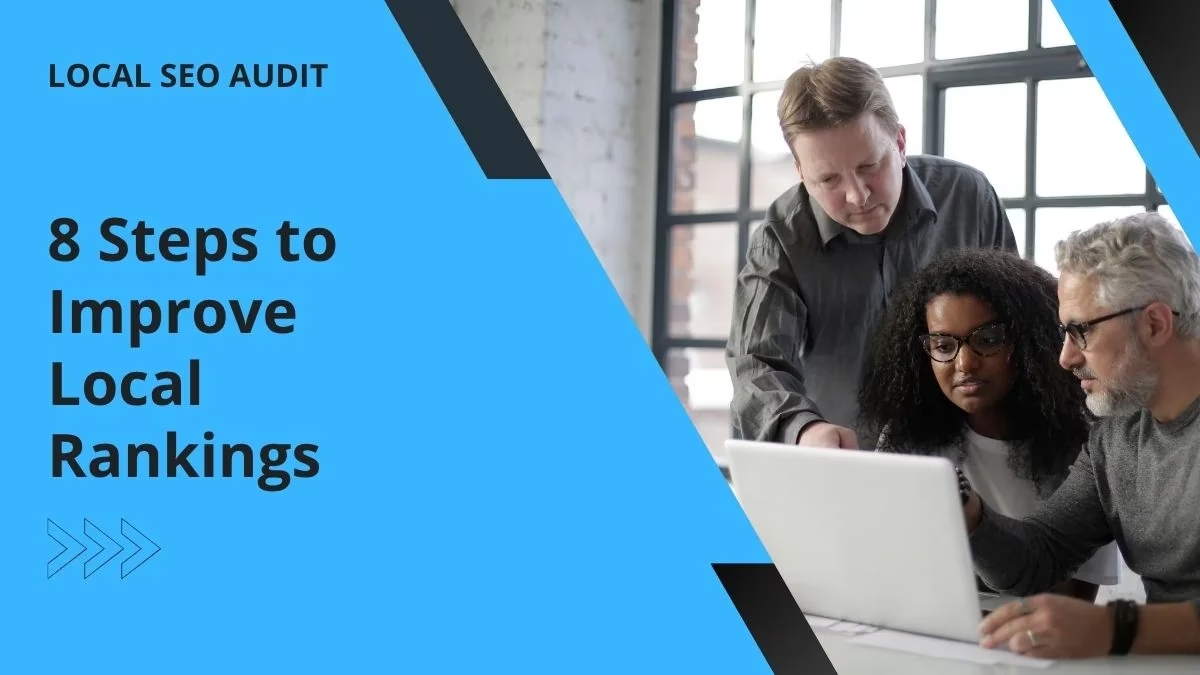
Today, because the digital world is so competitive, being visible to nearby customers is a need, not just a benefit. If you run a local business, work as a service provider or look after local clients in your agency, a Local SEO audit guides you to take over the local search results. We’ll show you how to analyze and boost your ranking results in the local search results for the long run.
Here are the 8 Steps to Improve Local Rankings
1. Analyze Your Google Business Profile (GBP)
Your Google Business Profile (earlier known as Google My Business) is the heart of local SEO. Start the Local SEO Audit with this step.
Steps:
- Have you reviewed your business’s name, address and phone number (NAP) to make sure they are correct?
- Is the list of categories you are working with, the correct one for your research?
- Is your company description constructed with keywords in a natural way?
- Do you upload pictures to Flickr that are properly geo-located and look professional?
Tip: Advise customers to post reviews as soon as they have finished using your internet banking. Reacting to reviews demonstrates Google that your business is still active and trustworthy.
2. Check Local Citations and NAP Consistency
If NAP is the same everywhere on the internet, it earns the trust of search engines. When your listings are inconsistent, Google may be confused and penalty your website in ranking.
Steps:
- Perform searches for your business on Yelp, Bing Places, Yellow Pages and Apple Maps.
- Work to correct incorrect or duplicate information within the listings.
- Some tools like Moz Local and Bright Local can be used to review and maintain your business listings within different directories.
Tip: Keep your business citations up to date and correct to help you come up in local search rankings.
3. Optimize On-Page Local SEO Elements
Having pages that specify your presence locally will strengthen your business.
Places to focus on while inspecting are:
- Metadata such as title tags and meta descriptions use keywords that fit your locality.
- Add schema markup to local businesses.
- Naturally mentioning your city or region in headings and articles emphasizes its importance to readers.
- Ensure your business address and the contact phone number appear at the bottom of all pages.
Tip: A dedicated landing page for every service location or city can improve your relevance a lot.
4. Evaluate Local Keyword Targeting
Are the keywords you are using the ones your local audience is typing in search engines?
Use tools included in the checklist to review your design document.
- Google Keyword Planner
- Ubersuggest
- Ahrefs and Semrush (if you have access to them)
Tip: Use real search data to fine-tune the list of keywords you want to use locally.
5. Check for Mobile-Friendliness and Page Speed
Most users now depend on their phones to find local businesses around them. Google indexes websites first from their mobile versions which means speed is very important.
Tools for examples include:
- Google Mobile-Friendly Test
- PageSpeed Insights is one.
Key fixes:
- Reduce the size of large pictures.
- Cut down on render-blocking JavaScript.
- Use a flexible website theme and put it on a fast and secure hosting server for the best performance.
Tip: A fast, mobile-friendly website will attract more users and have a better chance to rank high in search results.
6. Audit Reviews and Reputation Signals
Local pack rankings are influenced by reviews and trust from customers.
Things you need to do:
- Look for the average star rating given by reviewers on the app on different marketplaces.
- Review how frequently the reviews come in.
- Consider the tone and word choices customers make in their reviews since this gives useful information about what people in that area search for.
Tip: If a customer gives positive feedback, encourage them to say what the business offers and where it is located in their review.
7. Monitor Backlinks with Local Relevance
Building backlinks from local websites, newspapers, blogs or chambers of commerce can raise your local reputation.
Local SEO Audit tips:
- Use programs like Ahrefs, Moz or SEMrush to examine the backlink profiles of the competitor’s site.
- Detect broken or harmful backlinks in your profile and get rid of them using Google Search Console.
- Working with local partners to share their news or articles online.
Tip: Few exceptionally good connections from local websites are better than a lot of average ones.
8. Use Google Search Console and Local Performance Tracking
It doesn’t matter how hard you work unless you also check the results.
You can access this in Google Search Console:
- Examine how your site is performing by place, what gadgets are used and the searches being made.
- Look at how many times local keywords are being seen and clicked on to judge their performance.
- Deal with problems related to how content is covered, website indexing or Core Web Vitals metrics.
You can use Google Analytics to see:
- People coming to your local landing pages
- People leaving the app after one visit
- Getting more customers from within the community
Tip: Checking your online presence often lets you change your methods and solve problems before your local site is affected.
Conclusion:
To do better in local search, you have to keep your listings up-to-date, optimize them and engage with customers on a regular basis. With this 8-step list, you can organize and examine every key factor reduce your local visibility. When your citations are correct, you have a powerful Google Business Profile and keep analyzing your keywords and performance, it will be easier for you to show up in local Google search results.
Read More:
- Top 6 SEO Service Trends in 2025 That Will Boost Blogging
- 7 Secret Blog hacks No One Talks About
- 7 Effective Ways to Find Trending Keywords for SEO in 2025
- Top 5 AI Tools for Content Creation in 2025 You Need to Try
- 8 Essential Skills Every Smart SEO Specialist Must Master by 2026


